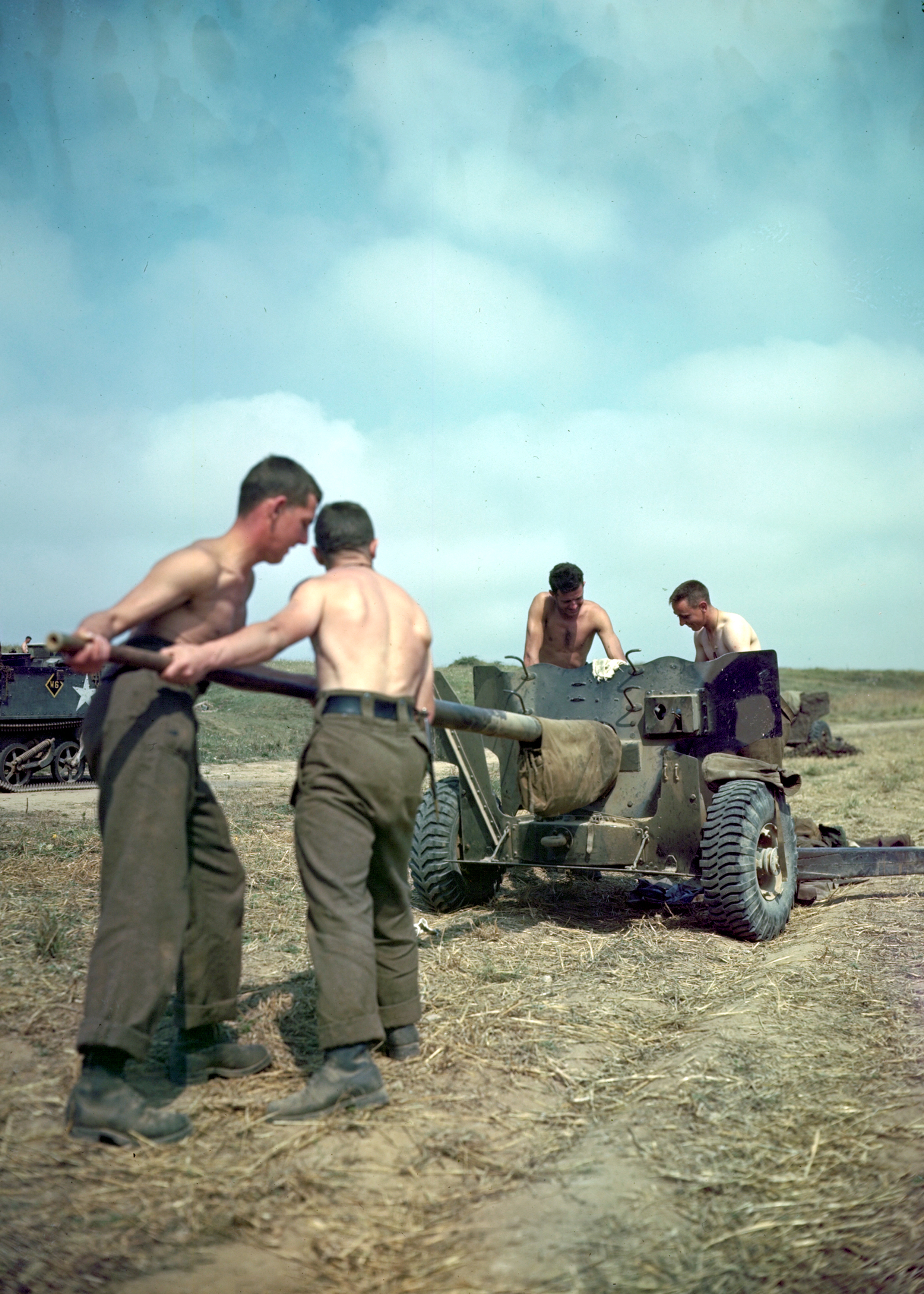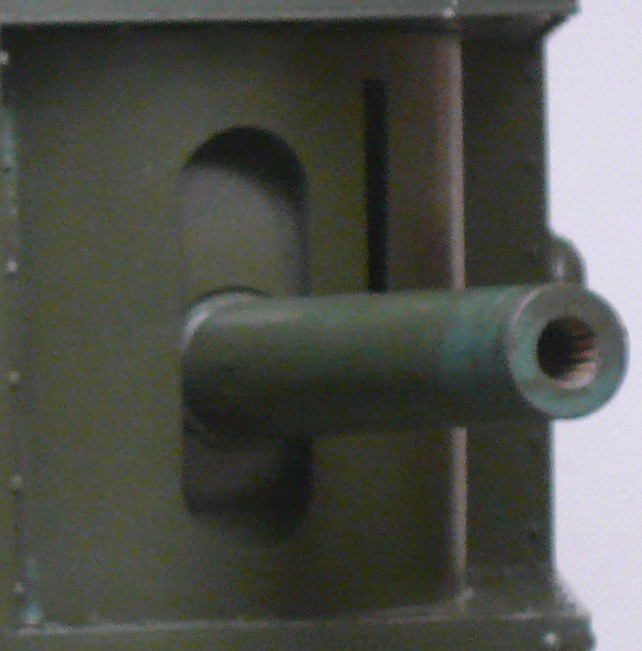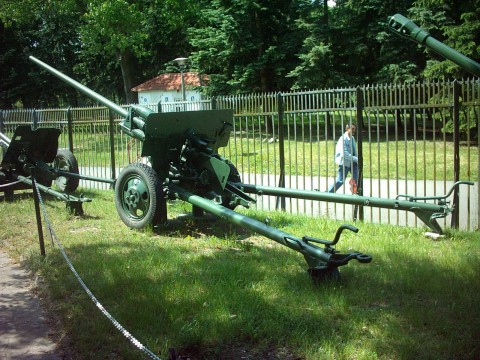|
6-pounder
6-pounder gun or 6-pdr, usually denotes a gun firing a projectile weighing approximately . Guns of this type include: * QF 6 pounder Hotchkiss, a 57 mm naval gun of the 1880s; a similar weapon was designed by Driggs-Schroeder for the US Navy *Driggs-Schroeder Marks II and III and Driggs-Seabury M1898 and M1900 57 mm guns on mobile mounts, used by the US Army circa 1890–1920 * QF 6 pounder 6 cwt Hotchkiss, a British 57 mm tank gun of 1917 * QF 6 pounder Nordenfelt, a 57 mm naval gun of the 1880s very similar to the Hotchkiss * Ordnance QF 6-pounder, a British 57 mm anti-tank and tank gun of World War II * QF 6 pounder 10 cwt gun, a British twin mount naval and coast defence gun 1937–1956. Older types include: * Canon de 6 système An XI, a French 6-pounder muzzle-loading cannon of the Napoleonic era *M1841 6-pounder field gun, an American 6-pounder smoothbore muzzle-loading cannon of the mid-1800s Guns denoted by calibre Examples simply referred ... [...More Info...] [...Related Items...] OR: [Wikipedia] [Google] [Baidu] |
QF 6 Pounder Hotchkiss
The Ordnance QF Hotchkiss 6 pounder gun Mk I and Mk II or QF 6 pounder 8 cwt were a family of long-lived light naval guns introduced in 1885 to defend against new, small and fast vessels such as torpedo boats and later submarines. There were many variants produced, often under license which ranged in length from 40 to 58 calibers, but 40 caliber was the most common version. 6-pounders were widely used by the navies of a number of nations and often used by both sides in a conflict. Due to advances in torpedo delivery and performance, 6-pounder guns were rapidly made obsolete and were replaced with larger guns aboard most larger warships. This led to their being used ashore during World War I as coastal defense guns, the first tank guns and as anti-aircraft guns, whether on improvised or specialized HA/LA mounts. During World War II 6-pounder guns were put back in service to arm small warships and as coastal defense guns. The last ships to carry 6-pounders were the Aegir-cl ... [...More Info...] [...Related Items...] OR: [Wikipedia] [Google] [Baidu] |
M1841 6-pounder Field Gun
The M1841 6-pounder field gun was a bronze smoothbore muzzle-loading cannon that was adopted by the United States Army in 1841 and used from the Mexican–American War to the American Civil War. It fired a round shot up to a distance of at 5° elevation. It could also fire canister shot and spherical case shot. The cannon proved very effective when employed by light artillery units during the Mexican–American War. The cannon was used during the early years of the American Civil War, but it was soon outclassed by newer field guns such as the 12-pounder Napoleon. In the US Army, the 6-pounders were replaced as soon as more modern weapons became available and none were manufactured after 1862. However, the Confederate States Army continued to use the cannon for a longer period because the lesser industrial capacity of the South could not produce newer guns as fast as the North. Background "Iron Age" By the early 1800s gun-founders knew that two metals were suitable for the manufa ... [...More Info...] [...Related Items...] OR: [Wikipedia] [Google] [Baidu] |
Ordnance QF 6-pounder
The Ordnance Quick-Firing 6-pounder 7 cwt,British forces traditionally denoted smaller ordnance by the weight of its standard projectile, in this case approximately . The approximate weight of the gun barrel and breech, "7 cwt" (cwt = hundredweight), was included in the designation to distinguish this gun from others also firing a 6 lb projectile. or just 6-pounder, was a British 57 mm gun, serving during the Second World War as a primary anti-tank gun of both the British and United States Army (as the 57 mm Gun M1). It was also used as the main armament for a number of armoured fighting vehicles. Although designed before the start of the war, it did not reach service until the North African Campaign in April 1942. There, it replaced the 2-pounder as an anti-tank gun, allowing the 25-pounder gun-howitzer to revert to its intended artillery role. Development and production Development Limitations of the existing 2-pounders were apparent even as the gun entered ... [...More Info...] [...Related Items...] OR: [Wikipedia] [Google] [Baidu] |
QF 6 Pounder 10 Cwt Gun
The British QF (quick-firing) 6-pounder 10 cwt gun"6 pounder" refers to the approximate weight of projectiles, which was a traditional British way of denoting small guns. "10 cwt" referred to the approximate weight of the gun and breech in cwt (hundredweight) rounded up : 10 cwt = 10 x 112 pounds = 1,120 pounds. It was standard British practice to differentiate guns of the same calibre by adding weight in cwt to the description. was a 57 mm twin-mount light coast defence and naval gun from the 1930s to 1950s. Development Following the emergence of small fast attack craft during the First World War, it was decided that the British Royal Navy Dockyards were vulnerable to attack by motor torpedo boats which had the speed to evade the heavy coast defence guns which defended them. In 1925, a design was adopted for a twin-barrelled weapon capable of sustained semi-automatic fire. The barrels of the weapon could be fired singly or together. The pedestal mounting and the gun crew w ... [...More Info...] [...Related Items...] OR: [Wikipedia] [Google] [Baidu] |
Driggs-Schroeder
Driggs-Schroeder was the name of several naval guns designed by US Navy officers William H. Driggs and Seaton Schroeder for the United States Navy in the late 1880s, fitted on ships built in the 1890s. Some Driggs-Schroeder weapons were also adopted by the US Army. Driggs later founded the Driggs-Seabury Ordnance Company in 1897, in partnership with his brother Louis Labadie "L. L." Driggs and Samuel Seabury, a retired US Navy officer. Driggs-Schroeder weapons included 1-pounder, 3-pounder (Navy Marks 2 and 3), and 6-pounder (Navy Marks 6 and 8)American Ordnance, pp. 37–39 naval guns. All were rapid-firing, which today would be called "single shot", with brass cased ammunition. They were among numerous models of these guns equipped on US Navy ships of the 1890s. Unlike some other manufacturers, Driggs-Schroeder did not design fully automatic 1-pounder and 3-pounder guns. Most Driggs-Schroeder weapons were manufactured by the American Ordnance Company in Bridgeport, Connecticu ... [...More Info...] [...Related Items...] OR: [Wikipedia] [Google] [Baidu] |
Driggs-Seabury
Driggs-Seabury Ordnance Company was founded in 1897 by William H. Driggs and Samuel Seabury, both US Navy officers, in partnership with William's brother Louis Labadie "L. L." Driggs, originally to produce guns for the US Army and US Navy designed by the partners. After a few reorganizations and an entry into the motor vehicle market, the company reorganized again in 1925; its ultimate fate is unclear from references. History Driggs-Seabury was preceded by the Driggs-Schroeder series of weapons, designed by W. H. Driggs and Seaton Schroeder in the late 1880s and produced by the American Ordnance Company in the 1890s. Driggs-Seabury incorporated the former Seabury Gun Company at its founding. Driggs-Seabury's plant was initially in Derby, Connecticut, in the former Brady Manufacturing facility.Williford, p. 222 Although Seabury died in 1902, followed by Driggs in 1908, the company continued under the leadership of Driggs' brother Louis Labadie "L. L." Driggs until at least 1935. ... [...More Info...] [...Related Items...] OR: [Wikipedia] [Google] [Baidu] |
QF 6 Pounder 6 Cwt Hotchkiss
The Ordnance QF 6-pounder 6 cwt Hotchkiss Mk I and Mk II was a shortened version of the original QF 6 pounder Hotchkiss naval gun, and was developed specifically for use in the sponsons of the later Marks of British tanks in World War I, from Mark IV onwards. History World War I The original QF 6 pounder naval gun had turned out to be too long for practical use with the current British heavy tank designs, which mounted guns in sponsons on the side rather than turrets on top as modern tanks do. The muzzles of the long barrels sometimes dug into the mud or struck obstacles when the vehicle crossed trenches or shell craters. The shortened QF 6 pounder 6 cwt Mk I of single tube construction was introduced in January 1917 in the Mark IV tank, and may be considered the world's first specialised tank gun. The shortened barrel incurred a reduction in muzzle velocity, but as tank guns in World War I were used against unarmoured or lightly armoured targets such as machine gun nests and ... [...More Info...] [...Related Items...] OR: [Wikipedia] [Google] [Baidu] |
QF 6 Pounder Nordenfelt
The QF 6 pounder Nordenfelt was a light 57 mm naval gun and coast defence gun of the late 19th century used by many countries. Note that this gun should not be confused with the short-barreled 57 mm Cockerill-Nordenfelt "Canon de caponnière" or fortification gun, which was used to arm the German A7V tank in World War I. Nordenfelt guns can be visually differentiated from equivalent and similar Hotchkiss guns by having slimmer barrels than the Hotchkiss, hence the Nordenfelt was considerably lighter. United Kingdom The UK adopted a 42-calibre version as Ordnance QF 6-pounder Nordenfelt British forces traditionally denoted smaller ordnance by the weight of its standard projectile, in this case . Mk I, Mk II, Mk III. United Kingdom Naval service They were originally mounted from 1885 onwards for use against the new (steam-driven) torpedo boats which started to enter service in the late 1870s. The Nordenfelt gun was adopted at the same time as the very similar QF 6 pou ... [...More Info...] [...Related Items...] OR: [Wikipedia] [Google] [Baidu] |
Naval Artillery In The Age Of Sail
Naval artillery in the Age of Sail encompasses the period of roughly 1571–1862: when large, sail-powered wooden naval warships dominated the high seas, mounting a large variety of types and sizes of cannon as their main armament. By modern standards, these cannon were extremely inefficient, difficult to load, and short ranged. These characteristics, along with the handling and seamanship of the ships that mounted them, defined the environment in which the naval tactics in the Age of Sail developed. Firing Firing a naval cannon required a great amount of labour and manpower. The propellant was gunpowder, whose bulk had to be kept in the magazine, a special storage area below deck for safety. ''Powder boys'', typically 10–14 years old, were enlisted to run powder from the magazine up to the gun decks of a vessel as required. A typical firing procedure follows. A wet swab was used to mop out the interior of the barrel, extinguishing any embers from a previous firing whic ... [...More Info...] [...Related Items...] OR: [Wikipedia] [Google] [Baidu] |
ZiS-30
The ZiS-30 was a light self-propelled anti-tank gun built for the Soviet Red Army in 1941. It was based on the Komsomolets armoured artillery tractor. They were successful vehicles, but production was limited by the number of Komsomolets tractors still in use. Production history The ZiS-30 was one of a few hastily designed armoured fighting vehicles created by Soviet industry shortly after the German invasion during Operation Barbarossa in 1941. In August 1941 Grabin's design bureau at the Gorky plant no. 92 mounted the 57 mm ZiS-2 gun onto the chassis of a Komsomolets artillery tractor. Only around 100 were produced. As one example of its employment, on October 2 the 21st Tank Brigade, under 30th Army in the Kalinin area, included a battery of four ZiS-30s. By October 20 three of these remained on strength. This brigade also had ten T-34-57s which carried the ZiS-4 tank model of the ZiS-2.Jack Radey and Charles Sharp, ''The Defense of Moscow 1941'', Pen & Sword Boo ... [...More Info...] [...Related Items...] OR: [Wikipedia] [Google] [Baidu] |
Canon De 6 Système An XI
The Canon de 6 système An XI was a French cannon and part of the Year XI system of artillery. It was part of the field artillery, and complemented the Gribeauval system. The canon de 6 système An XI was used extensively during the Napoleonic wars. It was considered as a good intermediate between the Canon de 8 Gribeauval, considered to be too heavy for field artillery, and the Canon de 4 Gribeauval, considered as too light and lacking striking power. One of the characteristics of the Canon de 6 is that its design is even simpler than that of the Gribeauval cannons, as it lacks reinforcing mould rings, except for the one before the muzzle.Chartrand (2), p.46 Notes References * Chartrand, René 2003 ''Napoleon's guns 1792-1815 (1)'' Osprey Publishing * Chartrand, René 2003 ''Napoleon's guns 1792-1815 (2)'' Osprey Publishing External links {{DEFAULTSORT:Canon de 6 systeme An XI Artillery of France ... [...More Info...] [...Related Items...] OR: [Wikipedia] [Google] [Baidu] |
57 Mm Anti-tank Gun M1943 (ZiS-2)
The ZiS-2 (russian: ЗиС-2) (GRAU index: 52-P-271) is a Soviet Union, Soviet 57 mm anti-tank gun used during World War II. The ZiS-4 is a version of the gun that was meant to be installed in tanks. ''ZiS'' stands for ''Zavod imeni Stalina'' (Russian ''Завод имени Сталина'', 'Factory named after Joseph Stalin, Stalin'), the official title of Artillery Factory No. 92, which produced the gun first. Development In the beginning of 1940 the design office of Vasily Grabin, V. G. Grabin received a task from the artillery department to develop a powerful anti-tank gun. The head of this department, Marshal Grigory Kulik, Kulik, and his subordinates estimated that the use of heavily armoured tanks by the USSR in the Winter War would not have gone unnoticed in Nazi Germany and would lead to the development of similar fighting machines there. There is also a chance that the department was influenced by German propaganda about the experimental multi-turreted "supertank" Ne ... [...More Info...] [...Related Items...] OR: [Wikipedia] [Google] [Baidu] |
.jpg)






.jpg)

